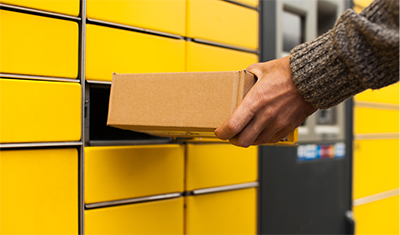




Ask the average person to define a 200-year-old giant of the distribution and logistics sector and you might get a blank look. Throw the words “post office” into the conversation and a flicker of recognition is likely to appear.
For the vast majority of people, the post office remains both a comforting community presence and a bricks-and-mortar throwback to a simpler time. Irrespective where you live, the customer services that postal operators offer are part and parcel (no pun intended) of how we send and receive physical mail. In addition, post offices are often where we go to apply for passports, have our letters kept while we are away and rent space for post that we don’t want delivered to our house.
The problem for posts is that the decades-long relationship between the customer and the physical post office is already in a state of flux.
In recent years, the long-standing work processes of post office networks have come under increased pressure.
Specialized logistics companies have stepped up their game to not only compete with posts but also offer customers similar services. At the same time, the disparity between digital natives and customers who may prefer the more traditional option of the post office has widened, with a consensus that posts need to adopt a 21st century mindset to compete and, importantly, remain relevant.
Think about engagement with other required aspects of our daily lives – banking, booking travel options, shopping, to name just three.
For many years, the defining and unifying factor is all of these services were deemed to require a physical location to complete a transaction. At the very least, most people would need to take time out of their day to visit these places and, more often than not, the hours of engagement were purely dependent on the locations (which included staff availability, naturally) themselves.
And the post office was arguably a significant element in this physical provider network.
Over the last decade, the demands of the connected society, a focus on customer experience and the ubiquitous computer in our pocket has changed the engagement dynamic beyond recognition. Factor in the needs of the urban versus rural populations and it becomes clear that posts have some tough decisions to make, especially in terms of whether or not they require actual locations to provide the services that people need.
In fact, the branchless post office could be the ideal solution for posts that prioritize customer engagement and flexibility over a dedicated postal space.
The concept of a branchless post office is already taking root. In the UK, for example, the BBC reported that the Isle of Man Post Office is looking to increase the number of third-party operated self-service kiosks, secure parcel drop options and “pop up offices.”
The caveat to this approach is that it – once again – draws a line between the urban and rural populations, with the latter preferring to visit an actual post office as opposed to a “branchless” version.
According to a recent U.S. Postal Service report, more than 50 percent of what are classed as rural customers know their postmaster or delivery person by name. In addition, they are more likely to send mail and, apparently, look forward to checking their mailbox. On the flip side, rural customers are the ones pushing for additional access to postal services – extended weeknight retail window hours, for example – and more 24/7 parcel lockers.
Posts also need to factor in how we currently engage with the post office. Omnichannel is often cited as the best strategy to offer a blended approach of digital products – mobile apps, self-service kiosks, say – and face-to-face solutions. Customers have different needs at different points in their daily lives, and there is a consensus that flexibility and integration with other providers or real estate options can move posts forward.
A branchless post office, for example, could exist in a shopping mall or an airport concourse. Pick up or drop off services don’t have to be confined to a post office, rather they can be available through third parties that have more amenable opening hours. A self-service kiosk does not need to be in a defined postal location, and there is value in accepting that the post office brand is likely to be just as valuable to customers, irrespective of where that engagement takes place.
Ultimately, the branchless post office is just one way in which posts can leverage and offer the services that customers want. As more people take advantage of distribution and delivery networks that operate on their schedule, the challenge for posts is to make sure that they not only remain competitive but also provide similar levels of customer engagement that postal networks were built on.
